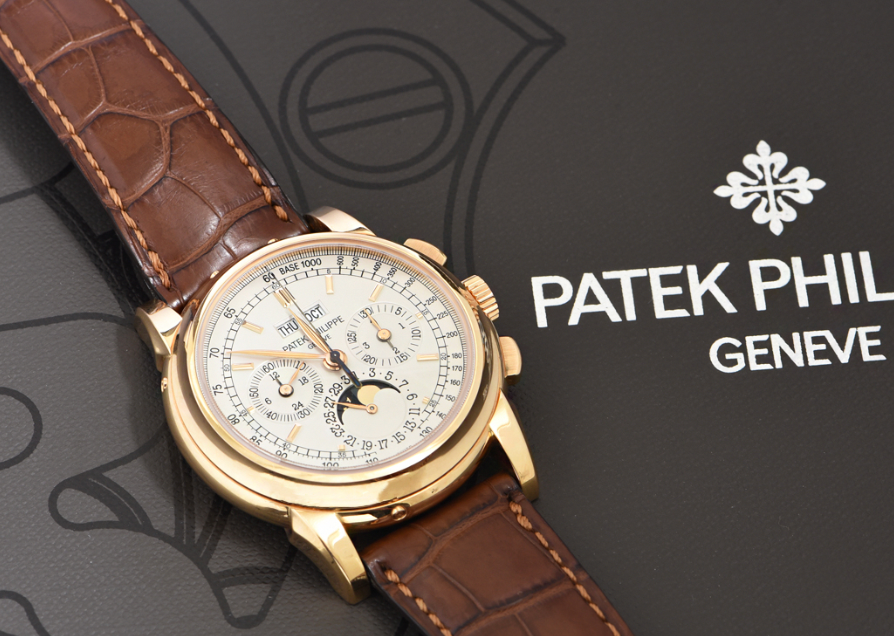
In no uncertain terms: 4 replica watches for larger wrists
Share
Arnold Schwarzenegger and His Audemars Piguet Royal Oak Offshore: It's the first image that comes to mind when I think of large-sized watches. However, this trend belongs to the past. Even though purists may not like to admit it, watches are subject to the rules dictated by fashion. The two most significant fairs of the year, SIHH and Baselworld 2019, made it clear: in addition to vintage-inspired models like the Breitling Navitimer and the still-current trend of bronze watches, it was evident how the cases of certain models had decreased in size. This has been a trend for several years, but as every fashion has a counter-fashion, we have chosen watches that measure more than 41 mm. We want to go against the current and oppose the trend of smaller watches, just like Terminator opposed Skynet. After this cinematic reference, let's get down to business: What are currently the watches that best resist the downsizing dictated by the watch industry?
Lange & Söhne Zeitwerk
Switching from Terminator to A. Lange & Söhne Zeitwerk is not that easy. The dimensions of the Zeitwerk have less to do with images of strength, masculinity, and similar attributes. The case of this model is indeed "extra-large" for practical reasons: the movement needs a lot of space, precisely 44.2 mm. Besides that, the watch features typical characteristics of German craftsmanship: elegance and lightness are reflected in the design, but also and above all in the functions. It is the first watch with a jumping digital display and decimal minute repeater, characterized not only by its large size but also by the audible effects, "visible" thanks to the two acoustic hammers on the dial. The dial is made of solid silver; the case is even made of platinum, and the indices are rhodium-plated gold. The price is no joke either: reference 147.025 costs about 300,000 euros on Chrono24, which corresponds to 7,000 euros per centimeter (diameter). Extra-large in every sense.
IWC Big Pilot
You might say I lack imagination now, as I propose a watch that already has "big" in its name, but the IWC Big Pilot could not be excluded from this list. It is a pilot's watch that has been an integral part of the Schaffhausen brand's offerings since 1940 and still contributes to its legendary reputation. The original model was conceived with an unimaginable diameter of 55 mm but was never produced. The current variants boast dimensions of 46 mm. Not only is the case of this model very large and striking, but the conical crown is also an eye-catching element. However, this also has a practical side related to the history of the Big Pilot: in the past, pilots needed a manageable and easy-to-set crown. If the size alone is not enough for you, then you might be interested in reference IW501005. The limited edition of 1,500 pieces has a 46 mm bronze case, a material that develops a very characteristic patina over time. Powered by the automatic IWC 52110 caliber (based on the IWC 52010), this model has a power reserve that can reach up to 168 hours. It is indeed a truly remarkable model, but who would dare to part with such a beautiful watch for an entire week? The bronze-colored case combined with a calfskin leather strap honors not only the adjective "big" but also the word "heritage" contained in the name.
Zenith Defy El Primero 21
If this article were about longer reference numbers, then the first prize would go to this model. Reference 10.9000.9004/96.R921 is a 44 mm watch that aesthetically would make a great impression on the wrists of some basketball players, rappers, or actors. Although this is a target already occupied by brands like Audemars Piguet and the like, Zenith has no reason to be sad: the Zenith Defy El Primero 21 is so large that it cannot be ignored. The case is entirely made of carbon, and even the crown and pushers are composed of this hi-tech material! Only the rubber strap and the buckle are not made of carbon, although they maintain its aesthetics. El Primero is a chronograph of a particular category: in addition to the extroverted look, it has a beating heart that is the opposite of what one would call sober. Many consider it revolutionary, and I won't dare to contradict this hypothesis. The El Primero caliber has always been known for its exceptional precision, a virtue that has become visible through the transparent caseback of the new El Primero 9004. However, it is the frequency of the new movement that elevates this chronograph to a higher class: the precise chronograph caliber to the hundredth of a second moves at a frequency of 360,000 vibrations per hour, a speed never reached before, allowing the second hand to move with exceptional consistency on the skeletonized dial. A show you can't miss! The Zenith El Primero is stunning both inside and out and deserves a special place on our list.
Hublot Classic Fusion
Few brands manage to attract attention like Hublot, the reborn manufacture thanks to Jean-Claude Biver. The Classic Fusion Titanium with reference 521.NX.1171.LR is, in turn, a chronograph powered by the Hublot 1143 caliber, enclosed in a 45 mm stainless steel case. The technical qualities may not compete with those of a Zenith Defy El Primero, but the shape of the titanium case and the rubber strap at least allow for an aesthetic comparison between the two watches. Although its movement does not exceed 28,800 vibrations per hour, in my opinion, the Hublot wins in terms of "glamour." The round case with the six characteristic screws is the distinctive feature of the Classic Fusion. It is a model that appears quite sober when compared to Hublot's offerings: it does not exhibit vibrant colors or a skeletonized dial. Despite having a black dial with sub-dials and a date at 6 o'clock, the polished and satin-finished titanium case has a less sporty appearance than the models in the Big Bang series. The Classic Fusion has a water resistance of 50 meters and features a classic alligator leather strap: for this reason, it is not a timepiece suitable for every situation.
The extra-large fashion, which reached its peak in the early 2000s thanks to various Hollywood stars, has come to an end again. But who said you always have to go in the direction dictated by current trends? Some wrists are not made for the classic dimensions of a 1960s or 1970s Datejust, and this has nothing to do with the vice of wanting to appear at all costs. As seen for some models presented here, certain functions simply need space. For other watches that do not boast this pretext, it is enough to say that various sizes always have a very specific reason. The important thing is that the watch is comfortable and enjoyable to wear.
